-
 Bitcoin
Bitcoin $117900
0.31% -
 Ethereum
Ethereum $3766
0.28% -
 XRP
XRP $3.176
-0.31% -
 Tether USDt
Tether USDt $1.000
0.00% -
 BNB
BNB $795.6
1.51% -
 Solana
Solana $186.8
-1.09% -
 USDC
USDC $0.9999
-0.01% -
 Dogecoin
Dogecoin $0.2353
-1.33% -
 TRON
TRON $0.3226
1.49% -
 Cardano
Cardano $0.8172
-1.08% -
 Sui
Sui $4.178
3.06% -
 Hyperliquid
Hyperliquid $43.05
-3.39% -
 Stellar
Stellar $0.4367
-0.57% -
 Chainlink
Chainlink $18.62
1.47% -
 Hedera
Hedera $0.2828
6.63% -
 Bitcoin Cash
Bitcoin Cash $584.7
5.65% -
 Avalanche
Avalanche $24.81
2.53% -
 Litecoin
Litecoin $112.8
-0.88% -
 UNUS SED LEO
UNUS SED LEO $8.975
-0.08% -
 Shiba Inu
Shiba Inu $0.00001395
-1.07% -
 Toncoin
Toncoin $3.285
-1.05% -
 Ethena USDe
Ethena USDe $1.001
0.01% -
 Polkadot
Polkadot $4.123
0.76% -
 Uniswap
Uniswap $10.49
-0.18% -
 Monero
Monero $326.5
0.14% -
 Dai
Dai $0.9999
-0.02% -
 Bitget Token
Bitget Token $4.576
0.34% -
 Pepe
Pepe $0.00001247
-1.55% -
 Cronos
Cronos $0.1400
3.77% -
 Aave
Aave $295.1
-0.73%
Proof of Work vs. Proof of Stake
Proof of Work and Proof of Stake are two key consensus mechanisms in blockchain, differing in energy use, security, and scalability.
Jul 27, 2025 at 02:21 am

Understanding Consensus Mechanisms in Blockchain
In the world of blockchain technology, consensus mechanisms play a crucial role in ensuring the integrity and security of decentralized networks. The two most prominent consensus algorithms used today are Proof of Work (PoW) and Proof of Stake (PoS). These protocols determine how transactions are validated, how new blocks are added to the blockchain, and how network participants are rewarded. Understanding the differences between these systems is essential for anyone involved in cryptocurrency, whether as a developer, investor, or user.
What Is Proof of Work (PoW)?
Proof of Work (PoW) is the original consensus mechanism introduced by Bitcoin. In a PoW system, miners compete to solve complex mathematical puzzles using computational power. The first miner to solve the puzzle gets the right to add the next block to the blockchain and is rewarded with newly minted coins and transaction fees.
- Miners use specialized hardware like ASICs or GPUs to perform hashing operations.
- Solving the puzzle requires significant energy and time, which makes the network secure against attacks.
- The difficulty of the puzzles adjusts automatically based on the total network hash rate.
This method is effective in preventing spam and double-spending attacks because it makes altering past transactions computationally expensive.
How Does Proof of Stake (PoS) Work?
Proof of Stake (PoS) is an alternative consensus mechanism designed to address some of the inefficiencies of PoW. In a PoS system, validators are chosen to create new blocks based on the number of coins they "stake" as collateral. This means that the more coins a validator holds and locks up, the higher the chance they have of being selected to validate the next block.
- Validators are required to lock up a certain amount of cryptocurrency in a wallet.
- The selection process may also consider other factors like the length of time the coins have been staked.
- Validators earn rewards in the form of transaction fees or newly minted coins.
PoS aims to reduce energy consumption and increase scalability by eliminating the need for intensive computational work.
Energy Consumption and Environmental Impact
One of the most significant criticisms of Proof of Work is its high energy consumption. Bitcoin mining, for example, uses more electricity annually than some countries. This has raised environmental concerns and prompted discussions about the sustainability of PoW-based networks.
- PoW relies on energy-intensive mining operations.
- Large-scale mining farms consume vast amounts of electricity.
- Critics argue that PoW contributes to carbon emissions and global warming.
In contrast, Proof of Stake is considered more energy-efficient because it doesn’t require miners to perform resource-heavy calculations. Instead, validators are chosen algorithmically, which drastically reduces the power needed to maintain the network.
Security Considerations in PoW and PoS
Both Proof of Work and Proof of Stake have their own security models and potential vulnerabilities.
In Proof of Work, the security of the network is proportional to the total computational power securing it. A 51% attack, where a single entity controls more than half the network’s hash rate, is theoretically possible but extremely costly and unlikely in large networks.
- Attackers would need to control a majority of the mining power.
- The cost of acquiring and operating such hardware is prohibitively high.
- Even if an attack succeeds, the value of the native cryptocurrency may plummet, harming the attacker's own investment.
In Proof of Stake, security is maintained by economic incentives. If a validator behaves dishonestly, they risk losing their staked coins through a process called slashing.
- Validators have a financial incentive to act honestly.
- Slashing mechanisms penalize malicious behavior.
- However, PoS systems may be more vulnerable to "nothing at stake" attacks, where validators have no downside to validating multiple blockchain forks.
Decentralization and Network Participation
Decentralization is a core principle of blockchain technology, and the choice between Proof of Work and Proof of Stake can significantly affect how decentralized a network is.
In Proof of Work, anyone with the right hardware can participate in mining. However, over time, mining has become centralized due to the rise of large mining pools and specialized hardware.
- High entry barriers due to hardware and electricity costs.
- Centralized mining pools can dominate the network.
- Geographic concentration of mining operations (e.g., in regions with cheap electricity).
In Proof of Stake, participation is based on coin ownership rather than computational power. While this lowers energy costs, it can lead to wealth concentration and centralization of power among large stakeholders.
- Wealthier participants have more influence over block validation.
- Smaller stakeholders may rely on staking pools, which can centralize control.
- Some PoS systems implement randomization techniques to mitigate centralization risks.
Transaction Speed and Scalability
Scalability is a major concern for blockchain networks, especially as adoption grows. Proof of Work systems often struggle with slower transaction speeds and higher fees during peak usage.
- Bitcoin processes about 7 transactions per second.
- Ethereum, also a PoW network (prior to Ethereum 2.0), handles around 15–30 transactions per second.
- High demand can lead to congestion and increased transaction fees.
Proof of Stake networks generally offer better scalability solutions. Many PoS-based blockchains implement sharding or other layer-2 technologies to improve throughput.
- Ethereum’s transition to PoS (Ethereum 2.0) aims to increase scalability.
- Sharding allows the network to process multiple transactions simultaneously.
- Lower energy consumption enables faster consensus and reduced fees.
FAQ: Common Questions About PoW and PoS
What is the main difference between Proof of Work and Proof of Stake?
The primary difference lies in how validators are chosen and how new blocks are created. Proof of Work relies on computational power to solve puzzles, while Proof of Stake selects validators based on the amount of cryptocurrency they hold and are willing to stake.
Which consensus mechanism is more secure?
Both mechanisms have their strengths. Proof of Work is battle-tested and has proven secure over time, especially in large networks like Bitcoin. Proof of Stake introduces economic penalties for malicious behavior, making attacks costly, but it is relatively newer and still evolving.
Can a blockchain switch from PoW to PoS?
Yes, several blockchains have successfully transitioned from Proof of Work to Proof of Stake. Ethereum is the most notable example, moving to a PoS model with its Ethereum 2.0 upgrade to improve scalability and energy efficiency.
Does Proof of Stake favor the rich?
Critics argue that Proof of Stake gives more power to those with larger holdings, potentially leading to centralization. However, many PoS systems implement mechanisms to randomize validator selection and encourage broader participation.
Disclaimer:info@kdj.com
The information provided is not trading advice. kdj.com does not assume any responsibility for any investments made based on the information provided in this article. Cryptocurrencies are highly volatile and it is highly recommended that you invest with caution after thorough research!
If you believe that the content used on this website infringes your copyright, please contact us immediately (info@kdj.com) and we will delete it promptly.
- Cryptos to Watch in 2025: Punisher Coin, Chainlink, and the Altcoin Arena
- 2025-07-27 18:30:13
- Bitcoin, Altcoins, Rebound: Navigating the Crypto Comeback Trail
- 2025-07-27 18:30:13
- Ethereum, Bitcoin, and Altcoins: A Shift in Crypto Tides?
- 2025-07-27 19:10:13
- Windtree Therapeutics' Bold BNB Strategy: A $520 Million Crypto Play
- 2025-07-27 19:10:13
- Solana, Staking, and Unilabs: What's the Buzz in the Crypto Space?
- 2025-07-27 16:50:13
- VeChain, HBAR, Remittix: Navigating the Crypto Landscape in 2025
- 2025-07-27 17:10:12
Related knowledge
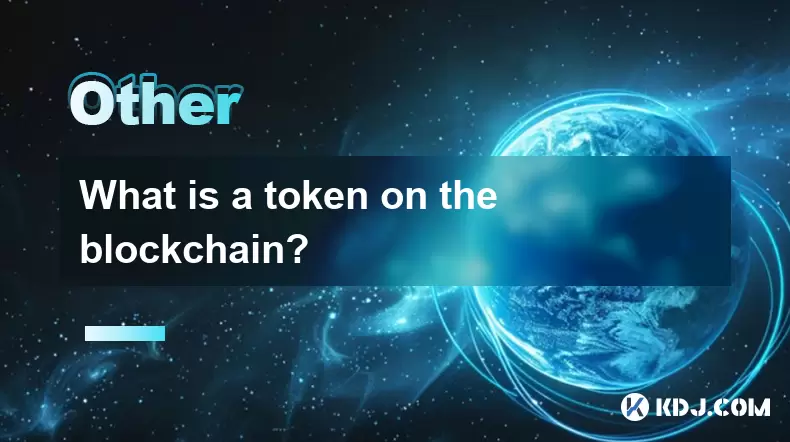
What is a token on the blockchain?
Jul 21,2025 at 07:00am
Understanding the Concept of a TokenIn the realm of blockchain technology, a token is a digital representation of an asset or utility that exists on a...
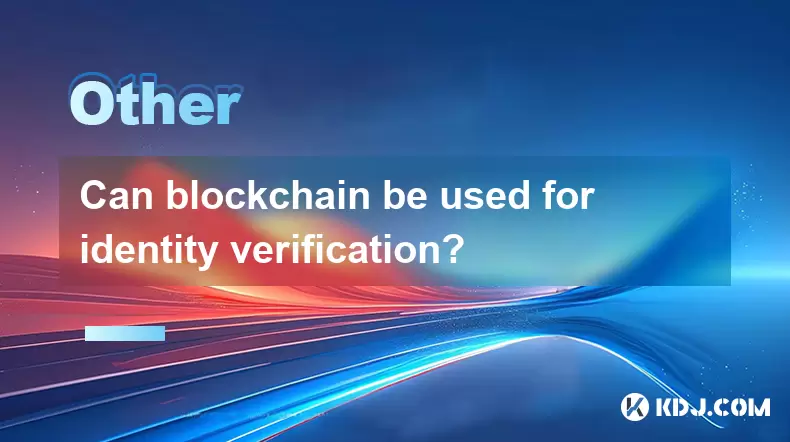
Can blockchain be used for identity verification?
Jul 18,2025 at 02:14pm
Understanding Identity Verification in the Digital AgeIn the modern digital landscape, identity verification has become a critical component for ensur...
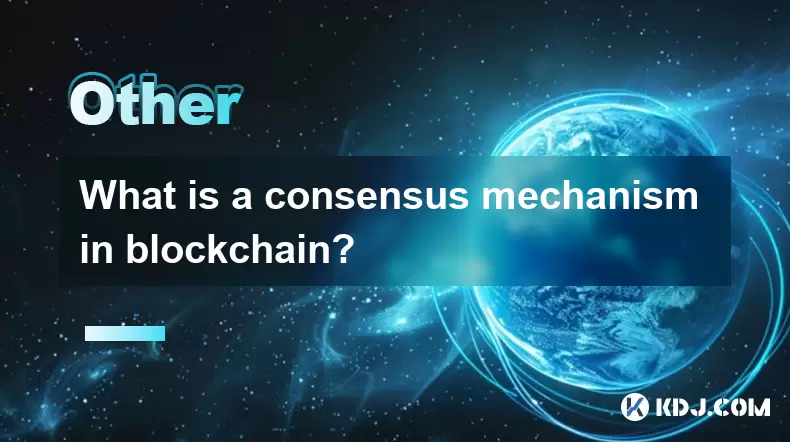
What is a consensus mechanism in blockchain?
Jul 21,2025 at 03:01am
Understanding the Basics of Consensus MechanismsA consensus mechanism is a critical component of any blockchain network. It refers to the process by w...
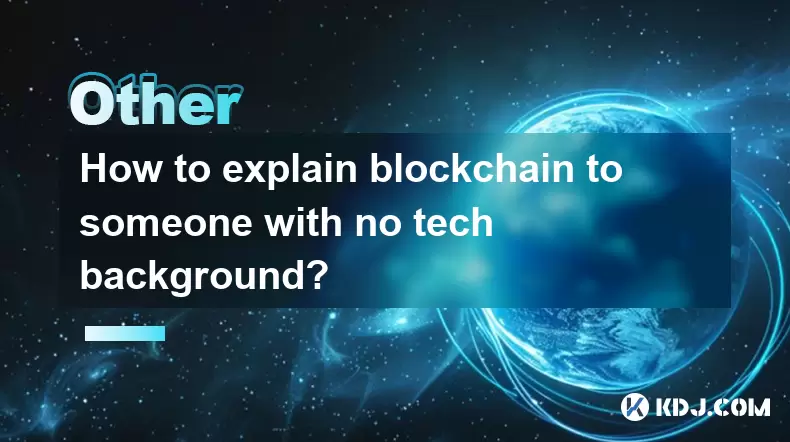
How to explain blockchain to someone with no tech background?
Jul 18,2025 at 11:08pm
Understanding the Basics of BlockchainTo explain blockchain to someone with no tech background, it's essential to start with simple analogies and avoi...

Who invented blockchain technology?
Jul 23,2025 at 01:28am
Origins of Blockchain TechnologyBlockchain technology did not emerge from a single inventor or institution. Instead, it evolved through a series of ac...
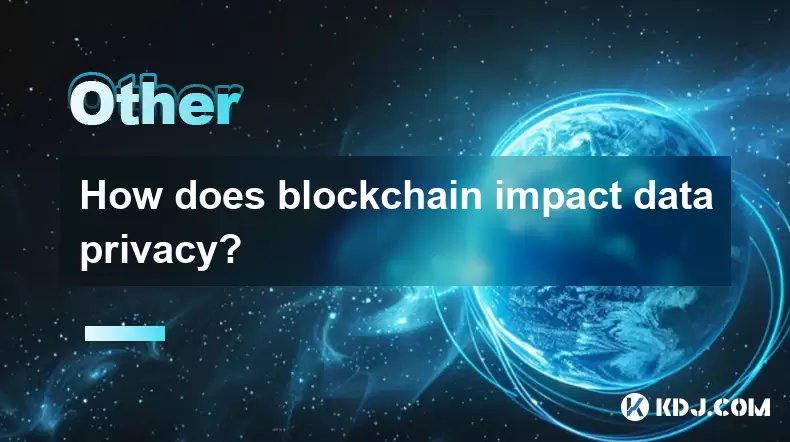
How does blockchain impact data privacy?
Jul 21,2025 at 02:21pm
Understanding the Role of Blockchain in Data PrivacyBlockchain technology, originally developed as the underlying infrastructure for cryptocurrencies ...

What is a token on the blockchain?
Jul 21,2025 at 07:00am
Understanding the Concept of a TokenIn the realm of blockchain technology, a token is a digital representation of an asset or utility that exists on a...

Can blockchain be used for identity verification?
Jul 18,2025 at 02:14pm
Understanding Identity Verification in the Digital AgeIn the modern digital landscape, identity verification has become a critical component for ensur...

What is a consensus mechanism in blockchain?
Jul 21,2025 at 03:01am
Understanding the Basics of Consensus MechanismsA consensus mechanism is a critical component of any blockchain network. It refers to the process by w...

How to explain blockchain to someone with no tech background?
Jul 18,2025 at 11:08pm
Understanding the Basics of BlockchainTo explain blockchain to someone with no tech background, it's essential to start with simple analogies and avoi...

Who invented blockchain technology?
Jul 23,2025 at 01:28am
Origins of Blockchain TechnologyBlockchain technology did not emerge from a single inventor or institution. Instead, it evolved through a series of ac...

How does blockchain impact data privacy?
Jul 21,2025 at 02:21pm
Understanding the Role of Blockchain in Data PrivacyBlockchain technology, originally developed as the underlying infrastructure for cryptocurrencies ...
See all articles

























































































